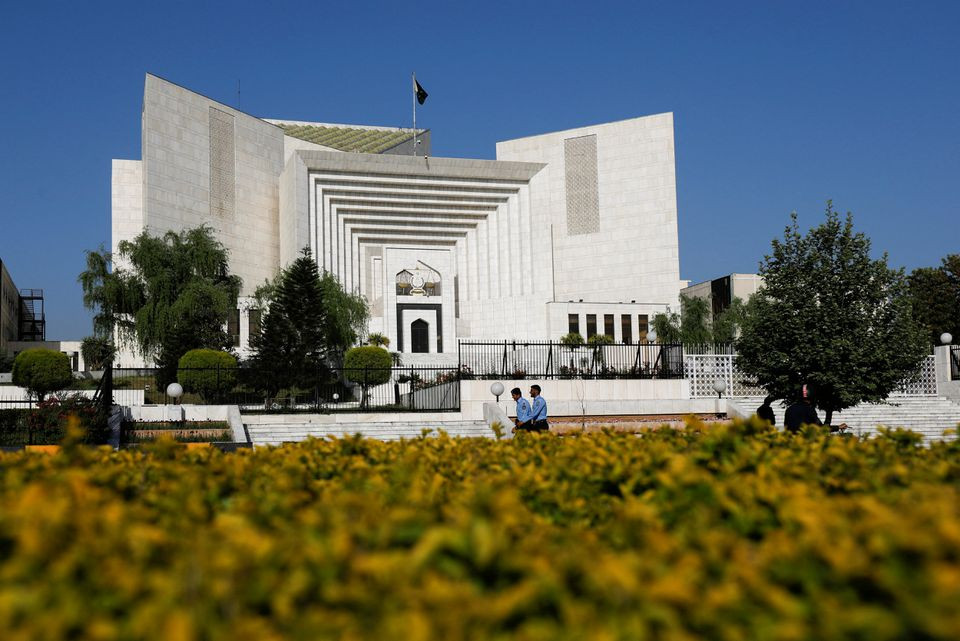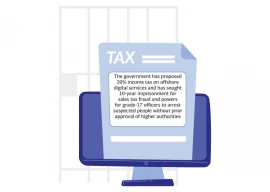
The Supreme Court has stressed the federal government to encourage and promote the use of Hybrid Electric Vehicles (HEVs) instead of applying “irrational interpretations” resulting in unwarranted restrictions on the exemption already in field.
“The technology of HEVs is well accepted and internationally acclaimed technology in the modern world.
Besides being fuel efficient, it is also an alternative solution to cautiously concentrate on the issue of global warming,” a 15-page judgment authored by Justice Muhammad Ali Mazhar said while upholding the Peshawar High Court (PHC) ruling.
“The proper and futuristic use of this technology will progress our country, and will not only improve and recuperate the atmosphere and ecosystem, but also alleviate destructive facets of climate change by lessening smoke emissions in order to effectively implement the Climate Change Act of 2016 and the Pakistan Environmental Protection Act (PEPA), 1997,” the judgment noted.
According to the fact of the case, the federal government vide SRO 499(I)/2013 dated 12-06-2013, had exempted customs duty, sales tax and withholding tax on import of Hybrid Electric Vehicles (HEVs) falling under PCT Code 87.03.
During the audit, deputy collector customs (import) dry port, Model Customs Collectorate, Peshawar observed that used Hybrid Suzuki, Hustler, Wagon-R, Mazda, Cross-over, Suzuki IGNIS were cleared illegally on 50 per cent exemption of duty and taxes in terms of SRO 499(I)/2013 dated 12-6-2013.
Show cause notices were issued to the importers and customs clearing agents under section 32 (3A) of Customs Act 1969 read with Section 3(1) of Imports and Exports (Control) Act, 1950, Section 3(1)(b) of Sales Tax Act, 1990, Section 148 and 182 of the Income Tax Ordinance, 2001 and section 33(5) of Sales Tax Act, 1990 and after submission of replies, the deputy collector customs (adjudication) through order-in-original upheld the show cause notice.
The respondents preferred appeals to the collector of customs (appeals) but all appeals were dismissed, following which, they approached the customs appellate tribunal and the appeals were allowed.
Later, the petitioner filed customs reference against the customs appellate tribunal judgment but all reference applications were dismissed.
A three-judge bench of the apex court led by Chief Justice of Pakistan (CJP) Umar Ata Bandial while hearing the customs department plea noted that though the SRO granting exemption on HEVs did not specifically encapsulate this particular purpose but, on the face of it, the exemption on the import of HEVs was logically issued for protection against climate change, and to minimise its adverse impact in the future which was a step forward towards the implementation and compliance of Pakistan Environmental Protection Act (PEPA), 1997.
"It is also the need of the time and a pressing priority to promote and encourage HEVs more and more, rather than applying irrational interpretations resulting in unwarranted restrictions on the exemption already in field," the judgment said.
The court noted that they cannot lose sight of the most important reason of promulgating the Pakistan Climate Change Act, 2017 which envisioned compliance with international conventions relating to climate change and adoption of comprehensive mitigation policies, plans, programmes, projects and other measures required to address the effects of climate change.
"In the definition clause, "climate change" means a change in the climate system which is caused by significant changes in the concentration of greenhouse gases as a direct or indirect consequence of human activities and which is in addition to natural climate change that has been observed during a considerable period; whereas "emissions", in relation to greenhouse gas, means emissions of that gas into the atmosphere caused by human activity; while "greenhouse gas" means any gas that contributes to the greenhouse effect by absorbing infrared radiation produced by solar warming of the earth's surface and includes carbon dioxide, methane, nitrous oxide, hydrofluorocarbons, perfluorocarbons, sulphur hexafluoride, nitrogen trifluoride and any other direct or indirect greenhouse gas as recognized by UNFCCC and IPCC from time to time."
"The function of the Council includes the obligation to co-ordinate, supervise and guide the mainstreaming of climate change concerns into decision-making by Federal and Provincial Governments to create enabling conditions for integrated climate-compatible and climate-resilient development processes in various sectors of the economy; approve and monitor implementation of comprehensive adaptation and mitigation policies, strategies, plans, programmes, projects and other measures, whereas the Functions of the Authority encompasses the formulation of comprehensive adaptation and mitigation policies, plans, programmes, projects and measures designed to address the effects of climate change and meet Pakistan's obligations under international conventions and agreements relating to climate change and within the framework of a national climate change policy as may be approved by the Federal Government from time to time; establish institutional and policy mechanisms for implementation of Federal and provincial adaptation and mitigation policies, plans, programmes, projects and measures, including plans for renewable energy and clean technology measures for energy efficiency and energy conservation and awareness-raising and capacity-building programmes; carry out a Technology Needs Assessment and prepare a Climate Change Technology Action Plan in accordance with international best practices for seeking technical and financial support etc." The schedule appended with reference to Sections 2, 4, 17 and 18 to the aforesaid Act integrates the United Nations Framework Convention on Climate Change (UNFCCC), Rio De Janeiro, 1992; Kyoto Protocol to the UNFCCC, 1997; The Paris Agreement, 2015; including any other agreement relating to climate change to which Pakistan is a signatory," the judgment said.
The judgment noted that in unison, the Pakistan Environmental Protection Act (PEPA), 1997 also ropes in various provisions for protection, conservation, rehabilitation and improvement of the environment, and for control of pollution, promotion of sustainable development, conservation, rehabilitation, improvement of the environment, prevention and control of pollution, promotion of sustainable developments which has close proximity and nexus to the Pakistan Climate Change Act, 2017.
"In this Act too, "pollution" means the contamination of air, land or water by the discharge or emission or effluents or wastes or air pollutants or noise or other matter which either directly or indirectly or in combination with other discharges or substances alters unfavourably the chemical, physical, biological, radiational, thermal or radiological or aesthetic properties of the air, land or water or which may, or is likely to make the air, land or water unclean, noxious or impure or injurious, disagreeable or detrimental to the health, safety, welfare or property of persons or harmful to biodiversity.
Section 12 of this Act is directly related to the regulation of Motor Vehicles which provides that no person shall operate a motor vehicle from which air pollutants or noise are being emitted in an amount, concentration or level which is in excess of the National Environmental Quality Standards or, where applicable, the standards established under clause (g) of sub-section (1) of section 6 and for ensuring compliance with the standards mentioned in sub-section (1), the Federal Agency may direct that any motor vehicle or class of vehicles shall install such pollution control devices or other equipment or use such fuels or undergo such maintenance or testing as may be prescribed."
"Last but not least, under Section 31, the Federal Government is vested with the powers to make rules including the rules for implementing the provisions of the international environmental agreements, specified in the Schedule to this Act which includes International Plant Protection Convention, Rome, 1951; Plant Protection Agreement for the South-East Asia and Pacific Region (as amended) Rome 1956; Agreement for the Establishment of a Commission for Controlling the Desert Locust in the Eastern Region of its Distribution Area in South-West Asia (as amended), Rome, 1963; Convention on Wetlands of International Importance Especially as Waterfowl Habitat, Ramsar, 1971 and its amending Protocol, Paris, 1982; Convention Concerning the Protection of World Cultural and Natural Heritage (World Heritage Convention), Paris, 1972; Convention on International Trade in Endangered Species of Wild Fauna and Flora (CITES), Washington, 1973; Convention on the Conservation of Migratory Species of Wild Animals, Bonn, 1979; Convention on the Law of the Sea, Montego Bay, 1982; Vienna Convention for the Protection of the Ozone Layer, Vienna, 1985; Montreal Protocol on Substances that Deplete the Ozone Layer, Montreal, 1987 and amendments thereto; Agreement on the Network of Aquaculture Centres in Asia and the Pacific, Bangkok, 1988; Convention on the Control of Transboundary Movements of Hazardous Waste and Their Disposal, Basel, 1989; Convention on Biological Diversity, Rio De Janiero, 1992 and United Nations Framework Convention on Climate Change, Rio De Janiero, 1992."
The judgment noted that in a nutshell the niceties of both the laws are intermingled and focused on the commitments and responsibility of the concerned Council and Authority constituted under the Acts to make sincere efforts to ensure the prevention and control of pollution, promotion of sustainable development, conservation, rehabilitation, improvement of the environment and address the effects of climate change in our country with a further obligation to implement different conventions and treatise.
"The mere legislation of laws without effective implementation and execution is useless and ineffectual.
Instead, sincere efforts are required by the concerned authorities to safeguard the climate and reduce the adverse environmental impact of human activity." According to the US Department of Transportation Report, updated on August 24, 2015 motor vehicles are a leading source of air pollutants that affect human health.
Vehicle emissions contribute to the formation of ground-level ozone (smog), which can trigger health problems and increased susceptibility to respiratory illnesses.
The aforesaid report further articulates that the levels of traffic-related air pollution are higher near major roadways that have high traffic volume but the air quality may be improved through HEVs.
Different research documents also suggest that toxic pollutants in the air or deposited on soils or surface waters can impact wildlife in a number of ways.
"Like humans, animals can experience health problems if they are exposed to sufficient concentrations of airborne toxins over time.
It can also damage crops and trees in a variety of ways.
Ground-level ozone can lead to reductions in agricultural crop and commercial forest yields, reduced growth and survivability of tree seedlings, and increased plant susceptibility to disease, pests and other environmental stresses," the judgment said.





1737501233-0/mlk-(1)1737501233-0-165x106.webp)












1737452260-0/Gaddafi-stadium-(2)1737452260-0-270x192.webp)









COMMENTS (1)
Comments are moderated and generally will be posted if they are on-topic and not abusive.
For more information, please see our Comments FAQ